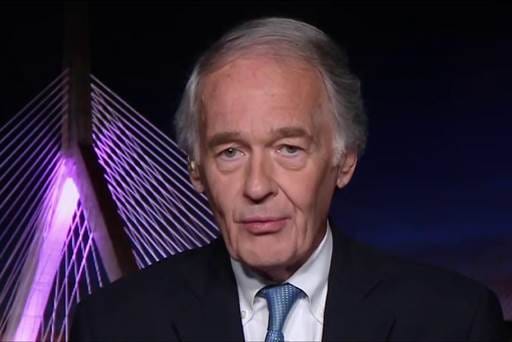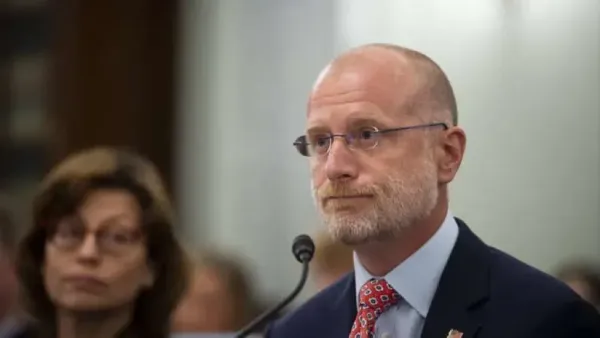Democrats in Congress Attempt to Reinstate Net Neutrality with Maneuver Against FCC
WASHINGTON, March 6, 2019 – On Wednesday, 46 House and Senate Democrats moved forward with legislation that would codify so-called “network neutrality” legislation into law, bypassing a court dispute over their repeal by the Trump administration Federal Communications Commission. The Save the Intern
Andrew Feinberg

WASHINGTON, March 6, 2019 – On Wednesday, 46 House and Senate Democrats moved forward with legislation that would codify so-called “network neutrality” legislation into law, bypassing a court dispute over their repeal by the Trump administration Federal Communications Commission.
The Save the Internet Act of 2019 would once re-instate network neutrality rules using an approach similar to last year’s attempt to use the Congressional Review Act to disapprove of the FCC’s repeal of net neutrality.
Last year’s CRA passed the Senate, but was never brought up for a vote in the House by the then-Republican majority.
Instead of enacting statutory prohibitions against paid prioritization, blocking and throttling of internet traffic by service providers, thereby writing network neutrality principles into what President Lyndon Johnson once called “the books of law,” the Save the Internet Act would declare that repeal order adopted by the FCC in December 2017 “shall have no force or effect,” and would prohibit the agency from reissuing any rule that is “substantially the same” as the one which repealed the 2015 rules, unless specifically authorized by an act of Congress.
If signed into law by President Donald Trump, the Save the Internet Act would literally turn back the regulatory clock by restoring the network neutrality regulations which were in effect on the last day of the Obama administration.
The similarities between this latest legislative effort to restore the Obama-era network neutrality rules and last year’s Congressional Review Act resolution go beyond the legislation’s text. The bill’s lead sponsors are Rep. Mike Doyle, D-Penn. and Senator Edward Markey, D-Mass., the duo behind the attempt to use a Congressional Review Act resolution to undo what was one of FCC Chairman Ajit Pai’s top priorities.
“Net neutrality ensures that when you pay your monthly bill to your internet service provider, you can able to access all content on the web at the same speed as your neighbor or big corporations,” said Markey, who has been a passionate advocate of strong network neutrality protections since the George W. Bush administration.
Markey called the Save the Internet Act a “clear and simple” piece of legislation, meant to “overturn the Trump FCC’s wrongheaded decision and restore strong net neutrality protections.”
Like last year’s Congressional Review Act resolution, this year’s Markey-Doyle team-up has the support of Democratic leadership in both the House and Senate.
Supported by House Speaker Nancy Pelosi
“It is an honor to join Democrats from both sides of the Capitol to introduce this strong legislation, which honors the will of the millions of Americans speaking out to demand an end to the Trump assault on net neutrality,” said House Speaker Nancy Pelosi, D-Calif. “Democrats are proudly taking bold action to restore net neutrality protections: lowering costs and increasing choice for consumers, giving entrepreneurs a level playing field on which to compete, helping bring broadband to every corner of the country, and ensuring that American innovation and entrepreneurialism can continue to be the envy of the world.”
Chris Lewis, Vice President of consumer advocacy group Public Knowledge, hailed the Markey-Doyle bill as “a simple, consensus approach to restoring strong net neutrality protections” with support from “a diverse and broad array of industry, nonprofit, racial justice, and other organizations.”
FCC Commissioner Geoffrey Starks said he was “pleased” with the proposed legislation.
“I continue to believe that the FCC’s 2015 Net Neutrality rules were the right approach and the bill introduced today takes us back in that direction—a direction that will empower the FCC to keep the internet open as a gateway to opportunity for students, job seekers, consumers, creators, and businesses,” said Starks, a Democrat and the newest member of the FCC.
Narrow CRA-like approach potentially on shaky legal ground
Representatives from Markey’s office did not respond to BroadbandBreakfast.com’s inquiry as to why Democrats were trying to restore old regulations rather than codify net neutrality protections into statutory language.
One longtime telecom industry observer suggested that the “simple, consensus approach” spoken of by Public Knowledge’s Lewis may be on shaky legal ground.
According to Berin Szoka, president of free-market think tank TechFreedom, the one-page bill is “a total sham, a fraud that cynically manipulates concern about net neutrality in a way that is carefully calculated to maximize Democrats’ political advantage instead of actually doing anything to protect net neutrality.”
Szoka suggested that Democrats, who managed to peel away three Senate Republican votes during last year’s CRA effort, are setting themselves up to use the copycat Markey-Doyle bill as a political bludgeon in hopes of gaining those Senate seats after the 2020 election.
He also noted that regardless of motivations, the legal basis on which the Democrats’ bill would revive the 2015 network neutrality rules is potentially shaky.
“Rarely, if ever, has such a short bill raised so many obvious legal problems,” Szoka said, noting that the Congressional Review Act — the authority on which the Save the Internet Act is based — allows Congress to strike down rules issued by regulatory agencies like the FCC, but not the orders by which an agency interprets provisions of a statute.
“Simply reviving a defunct regulatory order isn’t legislation, and probably wouldn’t stand up in court when challenged,” he said, adding that the bill is likely dead-on-arrival in the Republican-controlled Senate.
(Screenshot of Sen. Ed Markey courtesy MSNBC.)










Member discussion